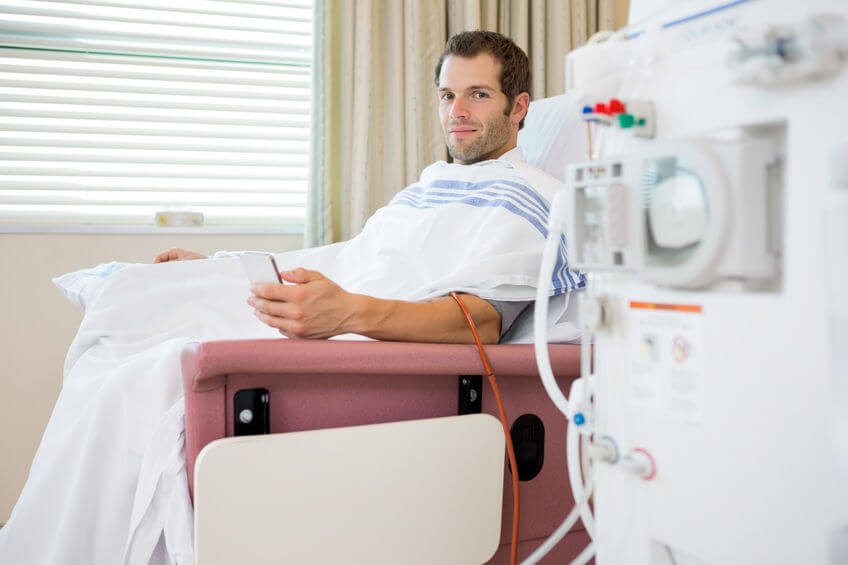Peritoneal Dialysis Treatment At Diamond Dialysis

Peritoneal dialysis (per-ih-toe-NEE-ul die-AL-uh-sis) is a form of dialysis whereby waste products are removed from your blood when your kidneys can no longer function adequately. It uses the peritoneum in your abdomen as the membrane through which fluid and dissolved substances are exchanged with the blood. It is used to remove excess fluid, correct electrolyte problems, and remove toxins in those with kidney failure. This is done with the help of a tube (catheter), which contains a cleansing fluid that flows into a part of your abdomen and filters waste products from your blood. After a period of time, typically prescribed by a doctor, the fluid with filtered waste products flows out of your abdomen and is discarded. This is peritoneal dialysis in a nutshell.
Peritoneal dialysis treatment is very different from hemodialysis, which is more commonly used during dialysis treatments. Peritoneal dialysis allows you to give yourself treatments at home, at work, and even while on an exotic island vacationing. However, peritoneal dialysis isn’t an option for everyone with kidney failure or disease. Why? To do this on your own, you need to be very comfortable with your hands and be willing to care for yourself at home.

Types of Peritoneal Dialysis:
- Continuous Ambulatory Peritoneal Dialysis (CAPD)
- Automated Peritoneal Dialysis (APD)
At Diamond Dialysis, the basic treatment is the same for each treatment. However, the number of treatments and the way the treatments are done is what makes each method different. CAPD is “continuous,” machine-free and done while you go about your normal activities such as work or school. The treatment is done by placing about two quarts of cleansing fluid into your stomach and then later draining it. This is done by hooking up a plastic bag which contains a cleansing fluid to the tube in your stomach. By raising the plastic bag to shoulder level, gravity causes the bag to pull the fluid into your stomach. When it’s empty, the plastic bag is removed and thrown away. When an exchange (putting in and taking out the fluid) is finished, the fluid (which now has wastes removed from your blood) is drained from your belly and thrown away. This process usually is done 3-5 times in a 24-hour period while you are awake during normal activities. Each exchange takes about 30 – 40 minutes. Some patients prefer to do their exchanges at mealtimes and at bedtime. It’s really up to you to decide.
Automated Peritoneal Dialysis (APD) differs from CAPD in that a machine (cycler) delivers and then drains the cleansing fluid for you. The treatment usually is done at night while you sleep.
